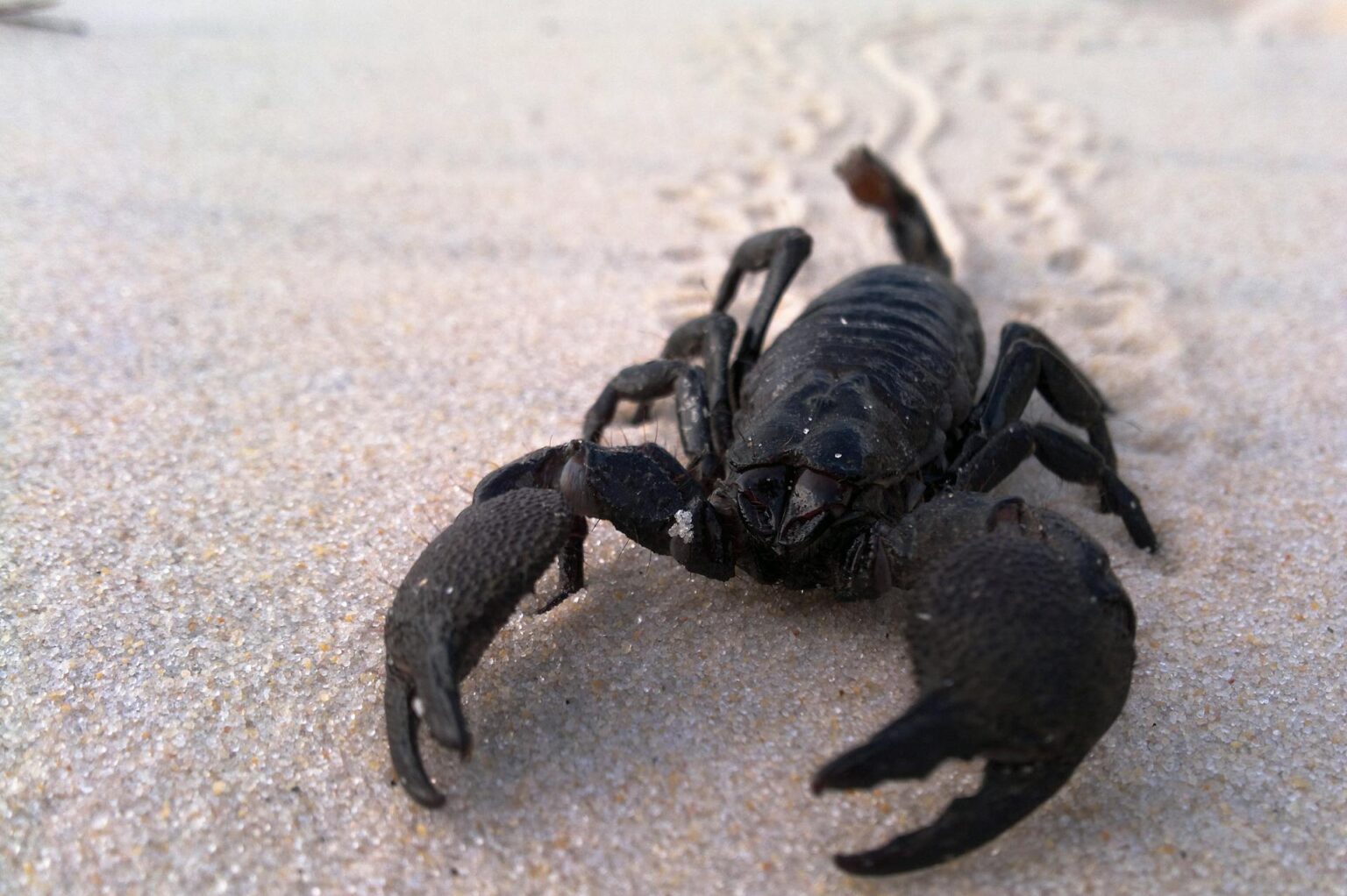Scorpions reign supreme among creatures that inspire both fear and fascination. With their menacing pincers and venomous tails capable of striking at lightning speed, these arachnids have long been the stuff of nightmares for many. But beneath their fearsome exterior lies a world of wonder waiting to be explored.
Scorpions are marvels of evolution, boasting a lineage that stretches back hundreds of millions of years. Their unique adaptations and behaviors have allowed them to thrive in diverse environments across the globe. From their ancient origins to their potential role in future medical breakthroughs, scorpions have much more to offer than just their sting.
As we delve into the captivating world of scorpions, prepare to have your perceptions challenged and your curiosity piqued. These ten striking facts about scorpions will reveal why these creatures deserve our respect, admiration, and protection as vital members of our planet’s ecosystems.
How old is the scorpion lineage compared to humans?
The scorpion lineage is incredibly ancient compared to humans. Scorpions have been around for approximately 420 million years, making them some of the oldest terrestrial animals still living today. They first appeared during the Silurian Period, long before the dinosaurs.
In contrast, modern humans (Homo sapiens) have only existed for about 200,000 years. This means the scorpion lineage is roughly 2,100 times older than our species. To put this into perspective, if the entire history of scorpions were condensed into a single year.
Humans would have appeared only in the last 25 minutes of December 31st. This vast difference in evolutionary timescales highlights the remarkable resilience and adaptability of scorpions, which have survived multiple mass extinction events and continue to thrive in diverse environments across the globe.
What makes scorpions glow under UV light?
Scorpions glow under ultraviolet (UV) light due to fluorescent chemicals in their exoskeletons. Specifically, these chemicals are found in the hyaline layer, a part of the cuticle in their exoskeleton. When exposed to UV light, these compounds absorb the high-energy UV radiation and re-emit it as visible light, typically in a bright blue-green color.
This phenomenon, known as fluorescence, is not fully understood in terms of its evolutionary purpose for scorpions. Scientists have proposed several theories, including that it may help protect scorpions from harmful sunlight, aid in communication between individuals, or assist in locating prey. Interestingly.
This fluorescent property is incredibly durable and persists even in fossilized scorpions millions of years old. This unique characteristic has proven invaluable for researchers studying scorpion behavior and population dynamics and for paleontologists examining ancient scorpion fossils.
Can all scorpion stings kill humans?
No, not all scorpion stings can kill humans. In fact, of the approximately 1,500 known species of scorpions, only about 25 (or roughly 2%) are considered capable of delivering a potentially lethal sting to humans. The vast majority of scorpion species possess venom that, while painful, is not life-threatening to healthy adults.
However, it’s important to note that even non-lethal stings can be dangerous for children, elderly individuals, or those with compromised immune systems. The most hazardous scorpions include species like the deathstalker of North Africa and the Middle East, the Indian red scorpion, and the Arabian fat-tailed scorpion.
These species are responsible for most scorpion-related fatalities, particularly in regions with limited access to medical care. Regardless of the species, it’s always advisable to exercise caution around scorpions and seek medical attention if stung.
10 Mind-Blowing Facts About Scorpions
Ancient Survivors
Fact 1: Scorpions Were Around Long Before the First Dinosaurs
Scorpions are among the most ancient creatures still in existence today. The fossil record indicates that scorpions have been present for approximately 420 million years, dating back to the Silurian Period. This era predates the emergence of dinosaurs by nearly 180 million years.
Highlighting the scorpions’ remarkable resilience and adaptability. Unlike the relatively recent arrival of modern humans, who have only been around for about 200,000 years, scorpions’ longevity underscores their evolutionary success.
Ancient scorpions, known as eurypterids or sea scorpions, were among the first marine animals to venture onto dry land. These pioneering creatures laid the groundwork for our diverse terrestrial ecosystems. Their early colonization of land demonstrates their ability to adapt to new environments, which has undoubtedly contributed to their survival through numerous mass extinctions and climatic shifts.
Classification and Characteristics
Fact 2: They Are Not Insects
Despite their appearance, scorpions are not insects. They belong to the class Arachnida, including spiders, mites, and ticks. Arachnids are part of a broader group of arthropods known as chelicerates, which encompasses horseshoe crabs and sea spiders.
A key distinction between chelicerates and insects is their number of legs: adult insects have six legs, while arachnids, including scorpions, have eight legs and two additional pairs of appendages called chelicerae and pedipalps.
Chelicerae often function as mouthparts, whereas pedipalps have evolved into pincers in scorpions. This anatomical distinction sets them apart from insects and highlights the diversity within the arthropod phylum.
The evolutionary lineage of scorpions can be traced back to around 450 million years ago when some sea scorpions measured over three feet long. Today, the largest species, such as Asia’s giant forest scorpion, can grow up to nine inches long and weigh up to two ounces.
Mating and Reproduction
Fact 3: They Dance Before Mating
Scorpions engage in a fascinating courtship ritual that resembles a dance, known as a “promenade à deux,” or “walk for two.” This intricate behavior varies among species but generally involves the male and female facing each other, grasping each other’s pedipalps, and rotating back and forth with their tails raised. This ritual, which can last minutes to hours, is not merely for show; it serves as a prelude to mating.
The dance often includes “clubbing,” where the scorpions bump their tails together without stinging. This careful interaction ensures that both parties are compatible and ready to mate. At the dance’s conclusion, the male deposits his spermatophore, a packet containing sperm, on the ground, which the female collects to fertilize her eggs. This ritualistic behavior underscores scorpions’ complex social interactions and reproductive strategies.
Fact 4: They Give Birth to Live Young
Unlike most arachnids, scorpions are viviparous, meaning they give birth to live young rather than laying eggs. After mating, the gestation period can range from two to eighteen months, depending on the species. When the babies are born, they are tiny replicas of adult scorpions with soft, white bodies. Immediately after birth, they clamber onto their mother’s back, where they remain for protection.
The maternal care exhibited by scorpions is remarkable. The mother defends her young until they are ready to fend for themselves. This protection period allows the young scorpions to molt and develop their exoskeletons, gradually gaining independence. This nurturing behavior ensures a higher survival rate for the offspring, highlighting the importance of maternal care in scorpion development.
Fact 5: Some Baby Scorpions Stay With Their Mom for 2 Years
In many scorpion species, the young absorb a nutritious yolk sac while on their mother’s back and leave after their first molt a few days later. However, in some species, the mother continues to care for her offspring for an extended period, sometimes up to two years. During this time, the mother may hunt and kill prey to feed her young, ensuring adequate nutrition for growth.
This extended period of maternal care is unusual among arachnids and underscores the adaptability and variability in scorpion life histories. The prolonged dependency of the young on their mother highlights the importance of parental investment in the survival and success of the next generation.
Unique Abilities
Fact 6: They Glow in UV Light
One of the most intriguing characteristics of scorpions is their ability to fluoresce under ultraviolet (UV) light. This phenomenon is due to fluorescent chemicals present in the hyaline layer of their exoskeleton. When exposed to UV light, scorpions emit a blue-green glow, making them easily visible in the dark.
The evolutionary advantage of this fluorescence remains a topic of scientific debate. Some theories suggest it may help protect scorpions from harmful UV radiation, assist in locating each other, or aid in hunting by making it easier to spot prey.
This trait provides a practical benefit for humans: researchers can easily locate, and study scorpions and hikers or campers can avoid potentially dangerous encounters. Remarkably, even fossilized scorpions retain this fluorescent property, glowing under UV light millions of years after death.
Survival Strategies
Fact 7: Some Scorpions Can Go a Year Without Food
Scorpions are efficient predators with a diverse diet that includes insects, spiders, and, in some cases, small lizards or mice. Their feeding strategies vary: some are ambush predators, lying in wait for prey, while others actively hunt or set pitfall traps. Regardless of their hunting method, scorpions can only consume liquid food. They use enzymes to digest their prey externally before sucking the liquefied nutrients into their tiny mouths.
Thanks to their low metabolic rates, many scorpions can endure long periods without food. While they typically feed every couple of weeks, some scorpions have been known to survive six to twelve months without eating. This remarkable ability to endure extended periods of fasting is a testament to their resilience and adaptability in harsh environments.
Fact 8: Their Venom Can Include Dozens of Different Toxins
All scorpions possess venom, but its composition is highly diverse and complex. Of the 1,500 known species of scorpions, only about 25 are considered potentially lethal to humans. These venomous species, representing just 2% of all scorpions, pose a significant threat in regions where medical treatment is scarce.
Scorpion venom can contain dozens of toxins, including neurotoxins, cardiotoxins, nephrotoxins, and hemolytic toxins. It may include other chemicals such as histamine, serotonin, and tryptophan.
The effectiveness of these toxins varies depending on the target, with some being more potent against specific animals, such as insects or vertebrates. Scorpions use their venom primarily for subduing prey and defending themselves against predators ranging from centipedes to birds, lizards, and small mammals.
Fact 9: They’re Stingy With Their Stingers
Producing venom requires significant energy and resources, so scorpions are generally conservative. They can control the amount of venom released with each sting and often prefer to use their pincers to subdue prey when possible. This strategy conserves their venom for situations where it is truly necessary, such as defending against larger predators or capturing particularly challenging prey.
The scorpions’ ability to regulate venom release highlights their efficiency and adaptability in managing their resources. This conservative approach ensures they can continue hunting and defending themselves effectively, even in resource-scarce environments.
Venom’s Dual Nature
Fact 10: Their Venom Can Kill or Save Lives
Despite its potential dangers, scorpion venom has shown promise in medical research, offering insights into new treatments for various diseases. For instance, the poison of the deathstalker scorpion (Leiurus quinquestriatus) contains chlorotoxin, which has inspired innovative methods for diagnosing and treating certain cancers. This compound can target cancer cells without harming healthy ones, providing a potential breakthrough in cancer treatment.
Similarly, venom from the lesser Asian scorpion has been found to contain antimicrobial peptides effective against various bacteria, fungi, and malaria parasites. These peptides also exhibit anti-inflammatory properties, making them potential candidates for treating conditions like arthritis. Other compounds in scorpion venom have shown promise as immunosuppressants for treating autoimmune disorders.
The dual nature of scorpion venom, capable of harming and healing, underscores the complexity and potential of these ancient creatures. By studying scorpion venom, scientists can unlock new medical treatments and better understand life’s biochemical mechanisms.
Conclusion
With their ancient lineage and unique adaptations, scorpions are fascinating creatures that deserve our respect and understanding. Their distinctive features, complex behaviors, and surprising capabilities highlight their importance in the natural world. By learning about scorpions, we can appreciate their role in ecosystems and their potential contributions to medical science.
Understanding scorpions challenges common perceptions and reveals the intricate balance of nature. As we continue exploring and studying these remarkable creatures, we may uncover more secrets that can benefit science and humanity.








